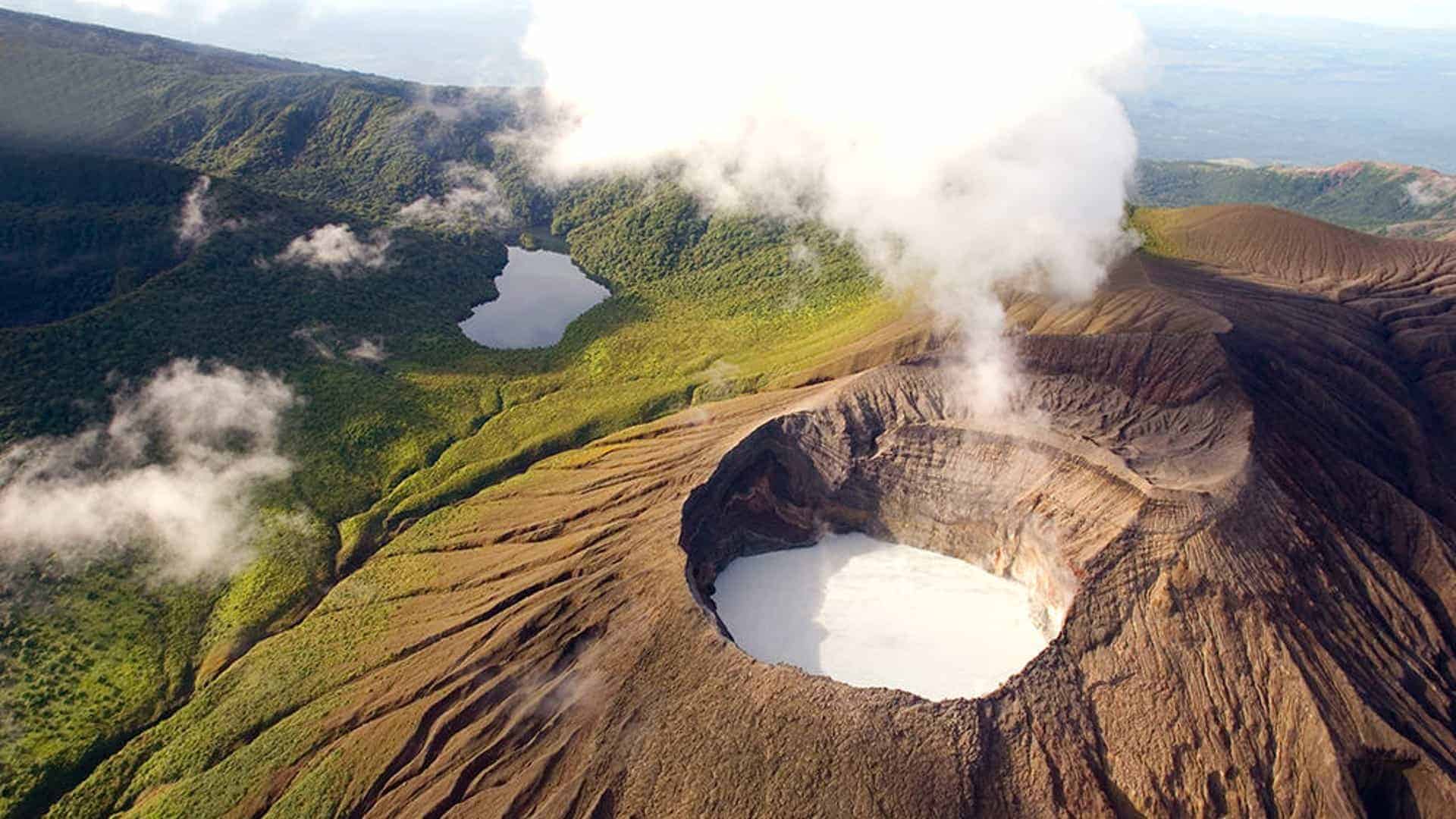Table of contents
Costa Rica is a hidden treasure for wildlife enthusiasts thanks to its incredible biodiversity, rich ecosystems, and commitment to conservation. Among the myriad of species that call this Central American paradise home, the big cats stand out as elusive and majestic creatures, captivating the hearts of those fortunate enough to catch a glimpse of their prowess. Join us as we embark on a virtual safari, exploring the big cats in Costa Rica and the habitats where you can encounter them and unravel the mysteries surrounding these charismatic predators.
Costa Rica’s Wild Cats Species
Six species of majestic felines call Costa Rica home. They live in a variety of settings, from severe mountainous terrain to deep rainforests, and they add to the rich and diversified fauna of the country. Read below to find out which these are.
#1
The Jaguar
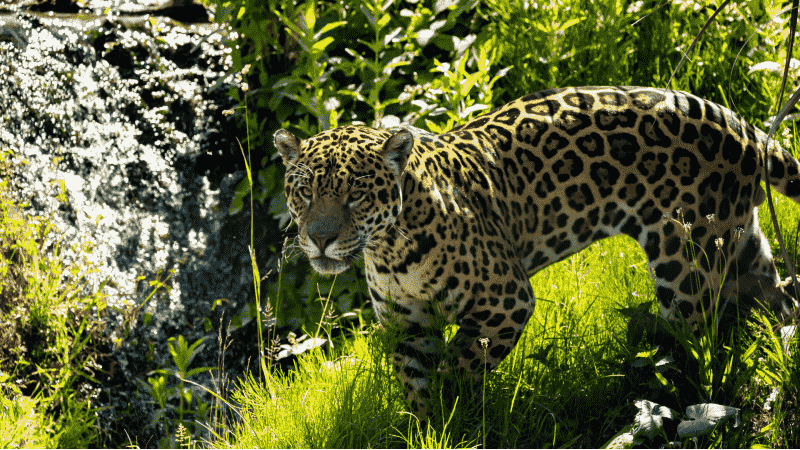
The jaguar stands atop the apex predator hierarchy in the dense rainforests of Costa Rica. Recognized for its distinctive golden coat adorned with black rosettes, the jaguar is an emblem of strength and stealth. In Costa Rica, the Osa Peninsula and the Corcovado National Park emerge as prime locations for jaguar sightings. These secretive wild cats, who are noted for being solitary and elusive, have here the perfect environment thanks to the park’s complex network of paths and riverbanks.
To catch a glimpse of the jaguar, embark on guided wildlife tours through Corcovado National Park, where an experienced naturalist guide can lead you along the less traveled paths, increasing the likelihood of an encounter with this magnificent feline. The thrill of spotting a jaguar amidst the lush greenery and the symphony of tropical birds is an experience that echoes the untamed beauty of Costa Rica’s tropical forests.
#2
The Puma
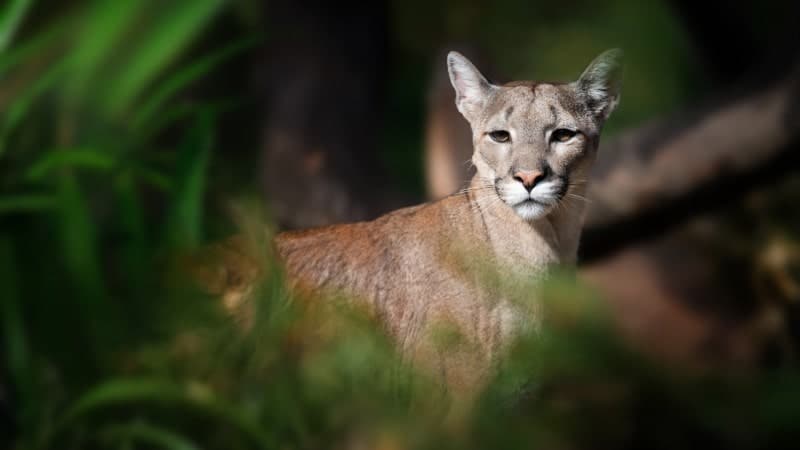
The puma, also known as the cougar or mountain lion, is another big cat species that roam the wilds of Costa Rica. These agile hunters inhabit various ecosystems, including the dense rainforests, but are often found in drier regions as well. Two noteworthy locations for puma sightings are the Arenal Volcano National Park and the Tenorio Volcano National Park.
The Arenal region, with its diverse landscapes ranging from volcanic peaks to lush lowlands, provides an excellent opportunity for puma encounters. Guided hikes and wildlife safaris in the national park offer a chance to witness the puma’s territorial prowess and observe its behaviors in its natural habitat.
In the Tenorio Volcano National Park, the combination of volcanic terrain and dense forests creates an environment where pumas thrive. Traverse the park’s trails, keeping a keen eye on the surroundings, and you might be rewarded with the sight of a puma gracefully navigating the rugged landscape.
#3
The Margay
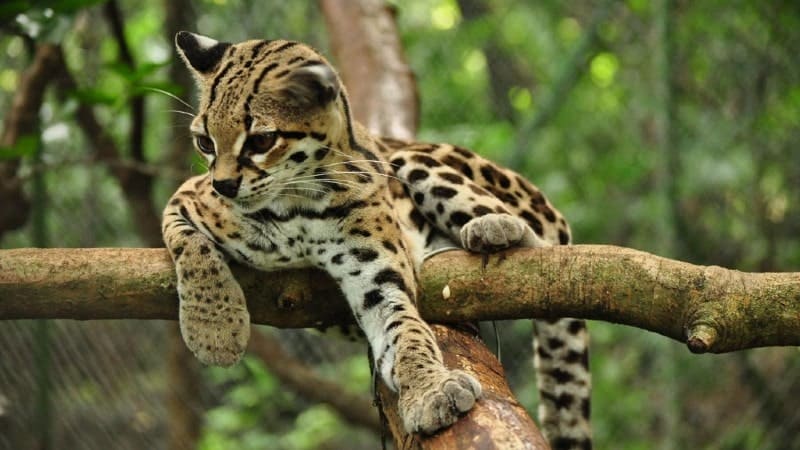
Venture into the mystical cloud forests of Costa Rica, and you may encounter the elusive margay. This small and solitary cat, often mistaken for an ocelot due to its similar appearance, boasts a distinctively long tail and a penchant for nocturnal activities.
Monteverde Cloud Forest Reserve and the Santa Elena Cloud Forest Reserve, nestled in the Tilarán Mountains, are prime locations for margay sightings. While spotting these nocturnal felines during the day is a rarity, night hikes led by experienced guides increase the chances of glimpsing the margay as it stealthily traverses the treetops, displaying its arboreal acrobatics.
#4
The Ocelot
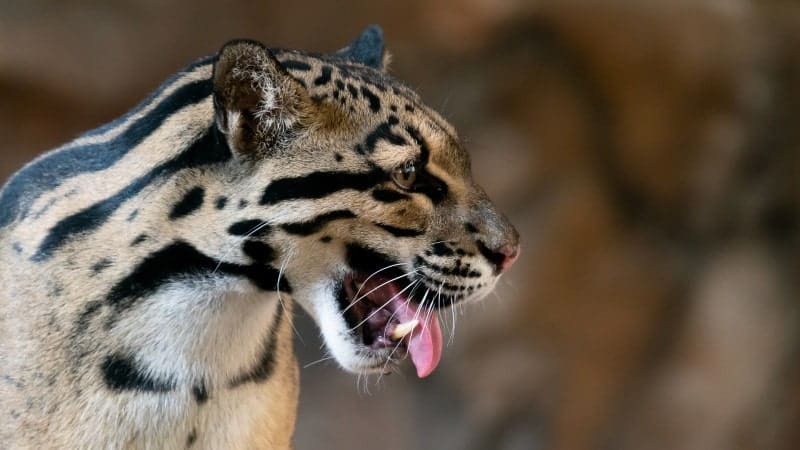
The ocelot is a medium-sized wild cat that graces the jungles of Costa Rica with its exquisite coat marked by intricate rosettes and spots. Although predominantly nocturnal, ocelots are occasionally active during the day, providing lucky visitors with a chance to witness their graceful movements.
The Tortuguero National Park, located on the Caribbean coast, and the Manuel Antonio National Park, on the Pacific coast, are recognized ocelot habitats. The dense vegetation and abundance of prey species in these parks create a suitable environment for these wild cats.
#5
The Jaguarundi
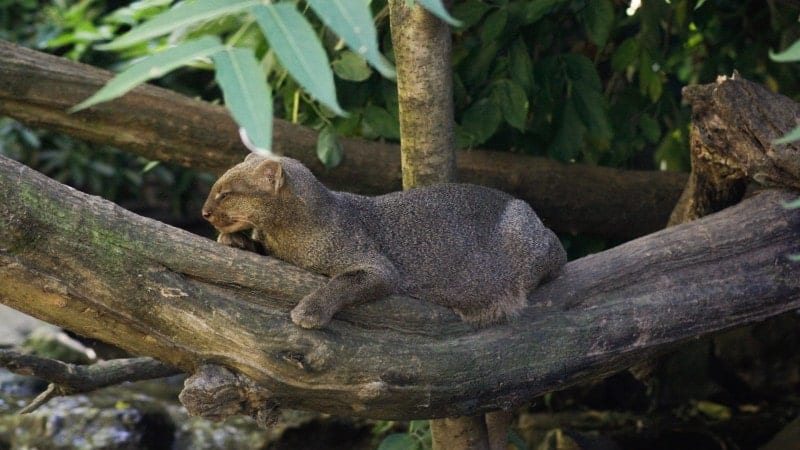
The jaguarundi is a small, secretive animal with a coat that can range in color from reddish-brown to gray. Due to their solitary and stealthy nature, sightings of these big cats are somewhat uncommon; nonetheless, wildlife enthusiasts may be able to get a glimpse of them in protected places like Corcovado National Park, La Selva Biological Station, and the Osa Peninsula. Nestled within Costa Rica’s astounding biodiversity, these places provide lush jungles and pristine ecosystems that allow a look into the Jaguarundi’s mysterious way of existence.
#6
The Oncilla
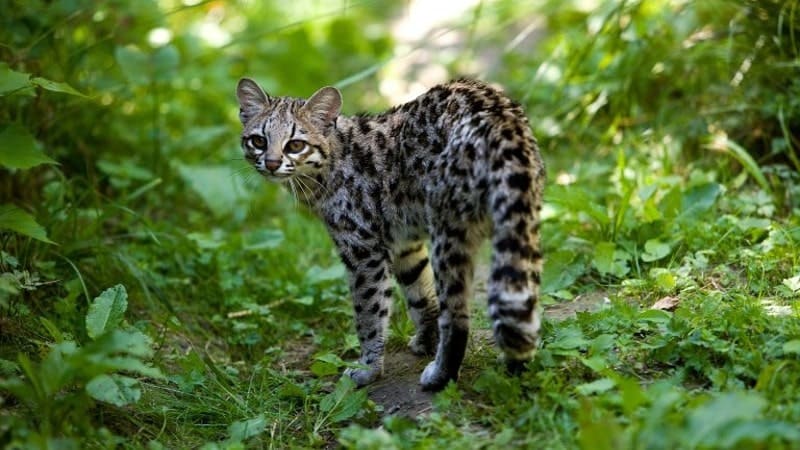
The oncilla, also known as the little spotted cat, adds a touch of mystery to Costa Rica’s wildlife tapestry. Characterized by its small size and distinctive spotted coat, the oncilla is a secretive and evasive feline that prowls the dense jungles of the country.
The Braulio Carrillo National Park, located in the Central Volcanic Mountain Range, and the La Amistad International Park, spanning the border with Panama, are considered potential habitats for the oncilla. While sightings are rare due to the cat’s elusive nature and the thick vegetation of its habitat, guided treks and wildlife excursions offer an opportunity to catch a glimpse of this enigmatic species.
Subscribe to our newsletter
to stay up to date
Conservation Efforts to Protect Big Cats in Costa Rica
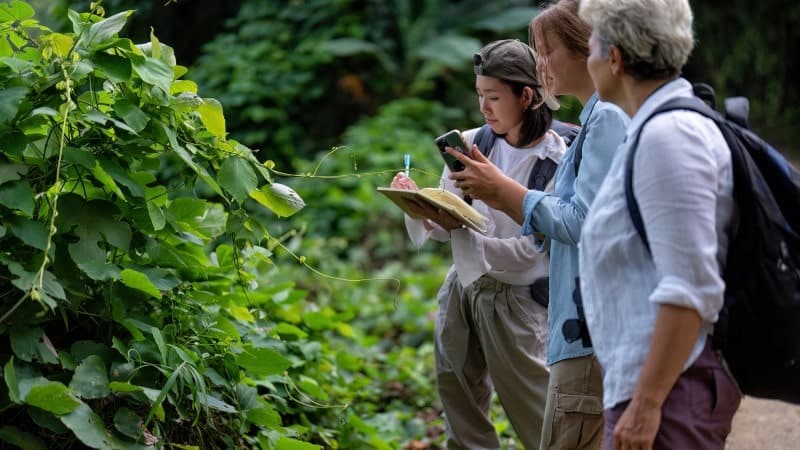
Costa Rica’s commitment to conservation has played a pivotal role in safeguarding the habitats of big cats and other wildlife species. National parks, reserves, and private wildlife sanctuaries collaborate on various initiatives to protect these magnificent creatures and their ecosystems.
Supporting responsible tourism operators and adhering to ethical wildlife viewing practices, such as maintaining a safe distance and minimizing disturbances, contribute to the conservation efforts in the region. By choosing eco-friendly accommodations and participating in educational programs, visitors become active participants in preserving Costa Rica’s diverse and delicate ecosystems.
The Iconic Osa Peninsula: A Haven for Big Cat Enthusiasts
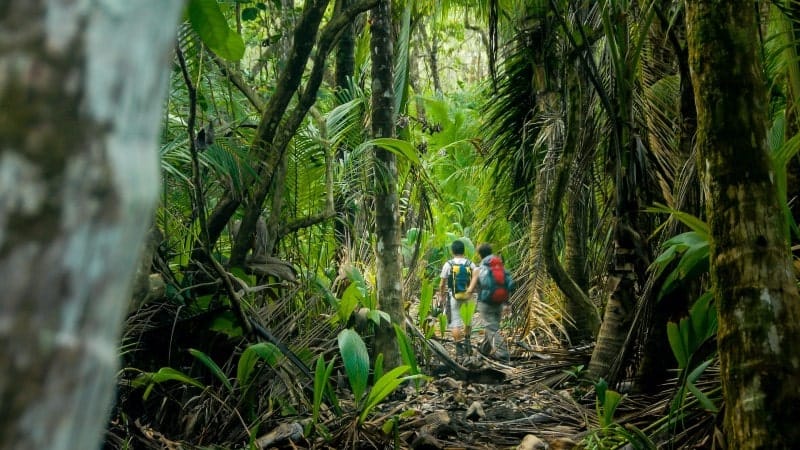
For travelers seeking an immersive big cat experience, the Osa Peninsula stands out as a haven for wildlife enthusiasts. This remote and biodiverse region is home to an array of big cat species, including jaguars, pumas, ocelots, and margays. Corcovado National Park, often referred to as the “crown jewel” of Costa Rica’s park system, encompasses a significant portion of the peninsula and is renowned for its concentration of wildlife.
Guided multi-day treks into the heart of Corcovado provide an opportunity to explore the various ecosystems within the park, increasing the likelihood of encountering its elusive inhabitants. The combination of primary rainforests, coastal habitats, and pristine rivers makes the Osa Peninsula a must-visit destination for those eager to witness the diverse big cat species that roam its wild landscapes.
Big Cat Conservation Organizations: A Collaborative Effort
Costa Rica’s commitment to wildlife conservation extends beyond the boundaries of its national parks and reserves. Several organizations dedicated to big cat conservation play a crucial role in research, habitat protection, and community education.
Partnerships with organizations such as Panthera, which focuses on the conservation of wild cats globally, contribute to the monitoring and protection of big cat populations in Costa Rica. Travelers interested in supporting these efforts can engage in eco-tourism initiatives that directly contribute to local conservation projects and the well-being of the country’s big cat species.
Costa Rica’s big cats represent a slightly wild side to this magnificent country, where every distant roar and rustle of leaves reveals a part of the nation’s rich natural history. Travelers learn to take an active role in the ongoing big cat conservation saga in this enchanted Central American paradise as they explore the depths of the forests and the variety of habitats on offer.
Costa Rica, committed to promoting peaceful coexistence between people and the incredible wildlife that makes this biodiversity sanctuary their home, is also committed to protecting its big cats. If you are planning a trip to this beautiful country in Central America, let us provide you with the best vacation rental you deserve; click here to find your perfect accommodation in paradise.
Subscribe to our newsletter
to stay up to date


